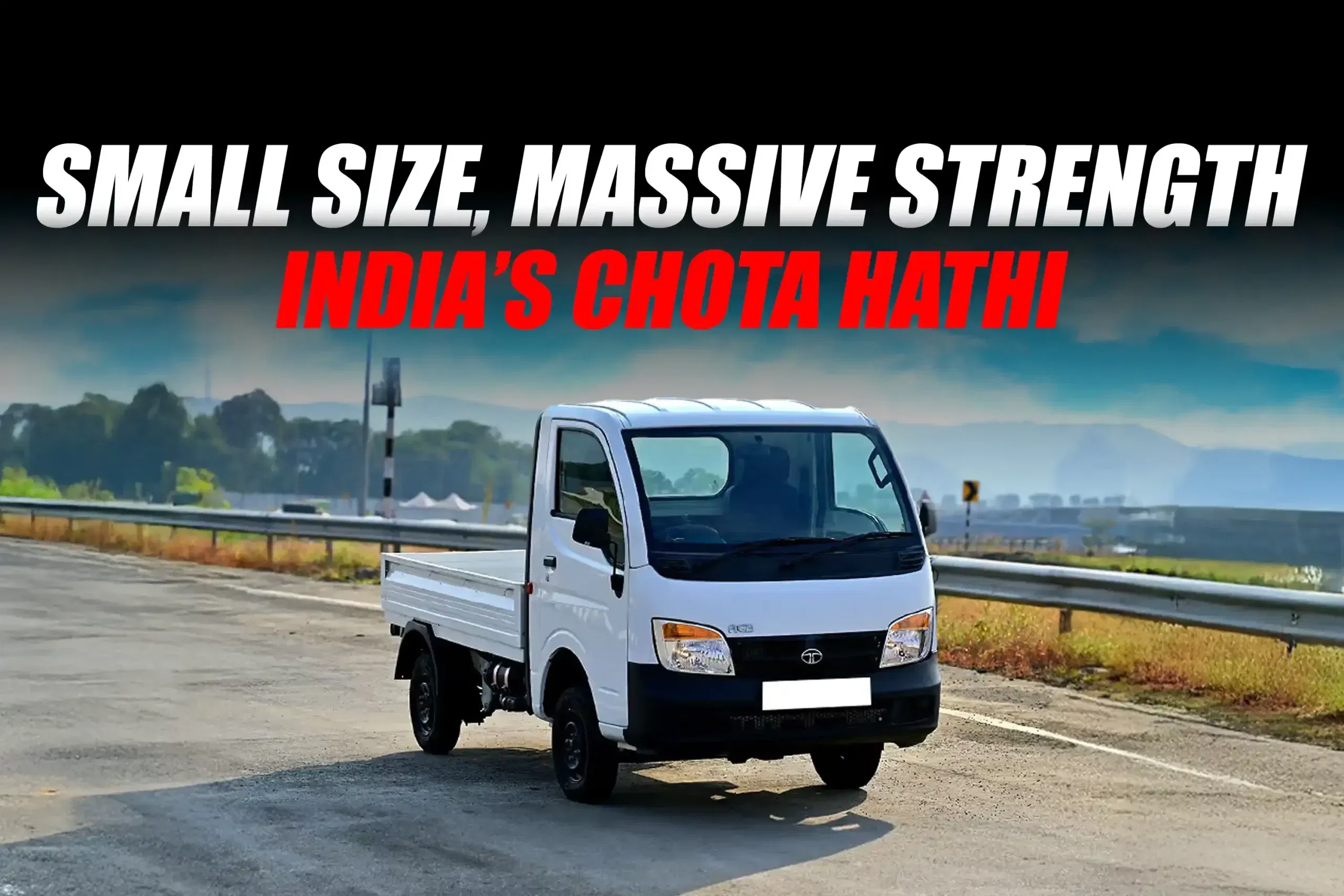If you’ve ever walked through the busy lanes of an Indian city, you’ve probably spotted a tiny truck weaving through traffic. That’s the Tata Ace, lovingly called Chota Hathi, and honestly, the name fits. Small, unassuming, yet somehow managing to carry loads that would make bigger trucks groan.
The Birth of Tata Ace in 2005
Back in 2005, small commercial vehicles weren’t exactly plentiful. People were making do with what was available, but there was a gap, and Tata Motors saw potential in the 4 wheeler compact commercial vehicle segment. The first Tata Ace came with a 700cc diesel engine which produced 16 horsepower and torque of 37.5 Newton meters, paired with a five-speed transmission and a sturdy body-on-frame chassis.
Tata Ace: Small But Surprisingly Tough
Calling it a little truck might make you underestimate it. That’s where the elephant metaphor clicks. It’s tiny, yes, but the payload it handles is nothing to scoff at. Navigating congested urban lanes is practically its superpower.
Tata Ace: Perfect for Last-Mile Delivery
If you’re running a small business in India, you know last-mile delivery is a headache. Narrow roads, traffic and broken down roads makes it a hassle to deliver cargo on schedule, but the Tata Ace made it possible due to its compact design and strong build. People started trusting it not just as a vehicle, but as a partner in earning their daily bread.
Tata Ace: Versatility That Surprises
Tata Ace flexibility made it indispensable for small business owners who needed a one-truck solution for everything. And let’s be honest, there’s a certain charm in a vehicle that quietly does all these jobs without fuss.
Tata Ace: Built to Last
Tata Ace was Rugged, low maintenance and dependable. Over the years it earned a reputation for being an honest workhorse. People didn’t just buy a truck, they bought peace of mind for their business.
Tata Ace: Chota Hathi Leaves a Big Footprint
From its launch to becoming a staple on India’s streets, Tata Ace earned its place in the hearts of many. The nickname Chota Hathi is no marketing gimmick; it came from the people who relied on it daily. Tiny in size, mighty in capability and surprisingly enduring.
- Stay updated with 91trucks for more articles and news.
- Subscribe to our YouTube channel.
- Follow us on Facebook, Instagram, and LinkedIn.









